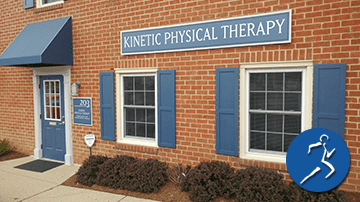Because of the demands people place on their wrists and hands, especially for those who may work on a computer all day or those performing repetitive assembling line work, as many as 1 in 20 Americans may experience Carpal Tunnel Syndrome (CTS). It is a common condition of the wrist and hand that can even affect the use of the whole arm. What causes CTS? How is CTS treated? Can CTS be prevented? What are the effects of Physical Therapy for Carpal Tunnel Syndrome? We have the answers to these, and many other questions about CTS.
What is Carpal Tunnel Syndrome?
The carpal tunnel is about the width of your thumb. It is a narrow channel on the palm side of your wrist and protects the median nerve and the tendons that bend your fingers. Pressure on the median nerve can cause pain and weakness in the wrist. Some people experience numbness or tingling in some of the fingers. Crowding or irritation of this nerve in the carpal tunnel leads to CTS.
What causes CTS?
Many conditions contribute to CTS, including holding extreme wrist positions and excessive finger use. This is compounded by force or vibrations, such as using a steering wheel driving heavy machinery. Assembly-line work, using hand tools, plus keyboard and mouse use can all play a part in causing CTS. Other causes include leisure activities like sewing and knitting, sports such as racquetball and handball, or playing string instruments such as guitar or the violin. Certain health conditions may also lead to CTS:
- Inflammation and swelling of the tendons of the wrist
- Injuries to the wrist including strain, sprain, dislocation, fracture
- Hormone or metabolic changes like pregnancy, menopause, thyroid imbalance
- Fluid retention such as during pregnancy
- Diabetes
- Taking certain medicines like steroids
- Degenerative and rheumatoid arthritis
What are the signs and symptoms?
Many people notice gradual onset of CTS describing such symptoms as burning, tingling, or numbness in the palm and fingers. While the symptoms can occur at any time, they seem more noticeable in the evening. However, as the condition worsens, these signs will happen at any time, during simple tasks such as holding a hairbrush or a heavy book. Some people also report they drop objects unexpectedly.
How Is CTS Diagnosed?
A physical therapist (PT) works in tandem with other healthcare professionals to accurately diagnose and treat CTS. If you experience the aforementioned symptoms, your PT will conduct a thorough evaluation of your body. That way, he can determine all of the factors that could be contributing to your condition. Some of the tests may include:
- Assessment of your neck and entire upper extremity to rule out other conditions which mimic CTS.
- Grip strength for your fingers and thumb
- Sensory tests
- Wrist and hand range-of-motion assessment
- Wrist flexion test
- Tinel’s Sign where a PT uses a reflex hammer or finger to tap over the median nerve at your wrist to test for tingling in the thumb or the index and middle fingers
- Electrical studies (electromyogram/EMG)
- Nerve conduction velocity (NCV)
- X-rays, especially if trauma has occurred or if an anatomical abnormality is suspected
What is the treatment for CTS?
Depending upon the stage of your CTS, there are many approaches for treatment. A good PT will start with educating you on adjusting wrist positions, proper posture, and safety regarding using sharp utensils or tools. Furthermore, he will encourage frequent rest and stretch breaks.
Some other protocol could include:
- Exercises to increase the strength of the muscles in your hand, fingers, and forearm
- Exercises aimed at strengthening the trunk and postural back muscles
- Stretching to improve the flexibility of the wrist, hand, and fingers
- Use of heat/cold treatments to relieve pain
- Prescribing a night splint to reduce discomfort
The goal of physical therapy is to reduce your symptoms without the need for surgery. However, sometimes surgery is necessary. In that case, physical therapy is adjusted to not only aid in recovery, but to prevent future flare-ups.
Can you prevent CTS?
While there may not be proven strategies for preventing CTS, there may be ways to minimize stress in your hands and wrists.
- Reduce force when performing work with your hands such as relaxing your grip.
- Take frequent rest and stretching breaks, and try alternating hands when performing tasks when possible.
- Adjust your wrist position, keeping them neutral as opposed to excessively bent.
- Create an ergonomic work environment that encourages proper posture.
- Improve your posture in all daily activities.
- Keep your hands warm at all times both indoors and outdoors to avoid stiffness in your fingers.
- Maintain good health by eating right and getting exercise. That way you may help control diseases that contribute to the onset of CTS.
If you are experiencing any of the symptoms or signs of CTS contact Kinetic Physical Therapy. We will conduct a thorough evaluation and prescribe physical therapy for Carpal Tunnel Syndrome that best suits your needs.




Leave a Reply
You must be logged in to post a comment.